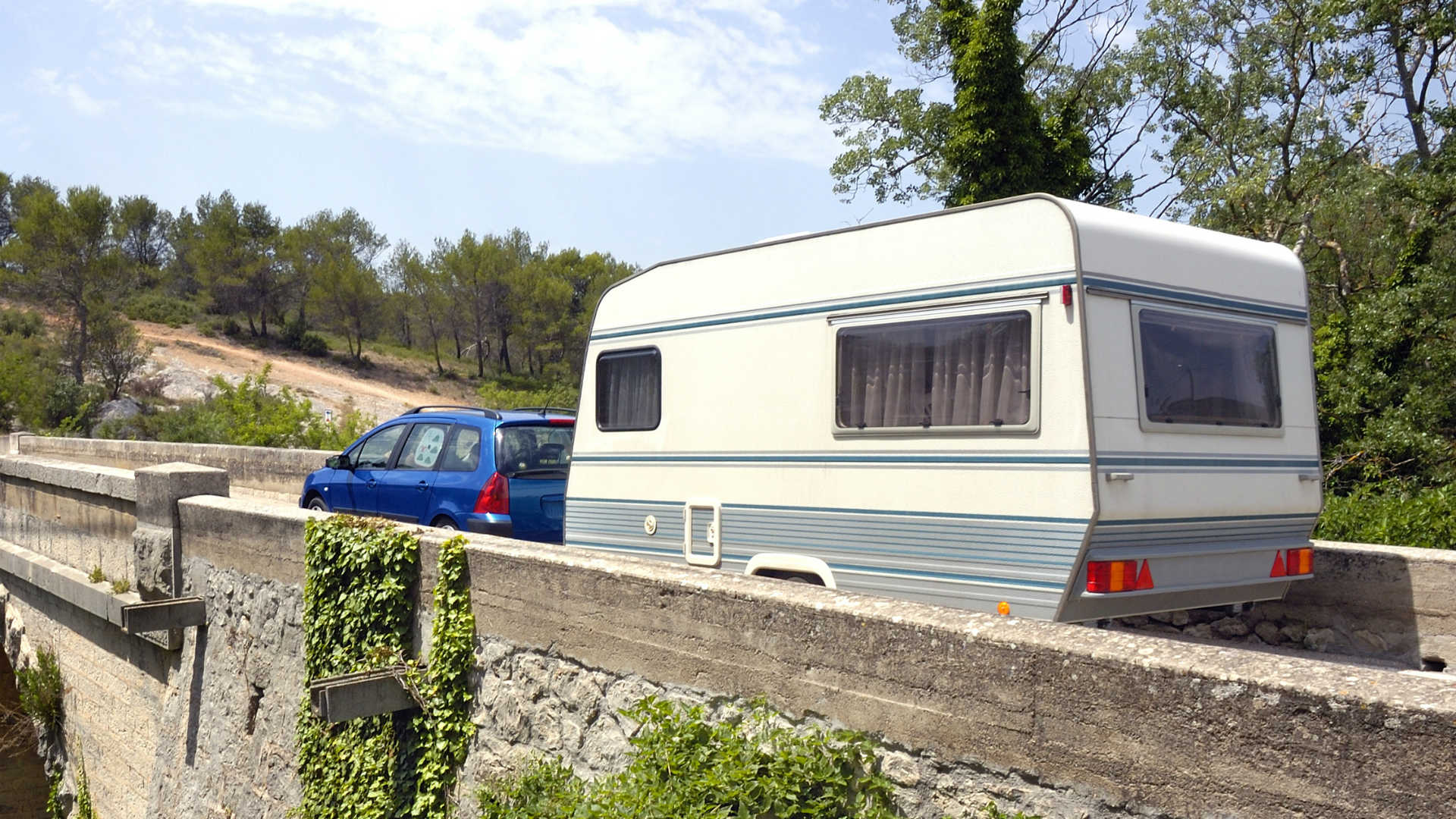
Whether you’re towing a trailer or a caravan, there are a number of safety considerations to remember before you get hitched.
Our brief guide to towing a trailer or caravan outlines the basics you need to know, from what you can and cannot tow, weight limits, coupling, and the safety checks to carry out before making a move.
Get it wrong, and you risk causing an accident and being banned from driving. It goes without saying that you should ensure the towing vehicle is safe and legal, so this advice is geared towards towing and towing equipment.
More advice on Motoring Research
Because this guide is designed to be a broad overview, you should consult the National Trailer & Towing Association’s (NTTA) detailed guide for more information.
What you can tow
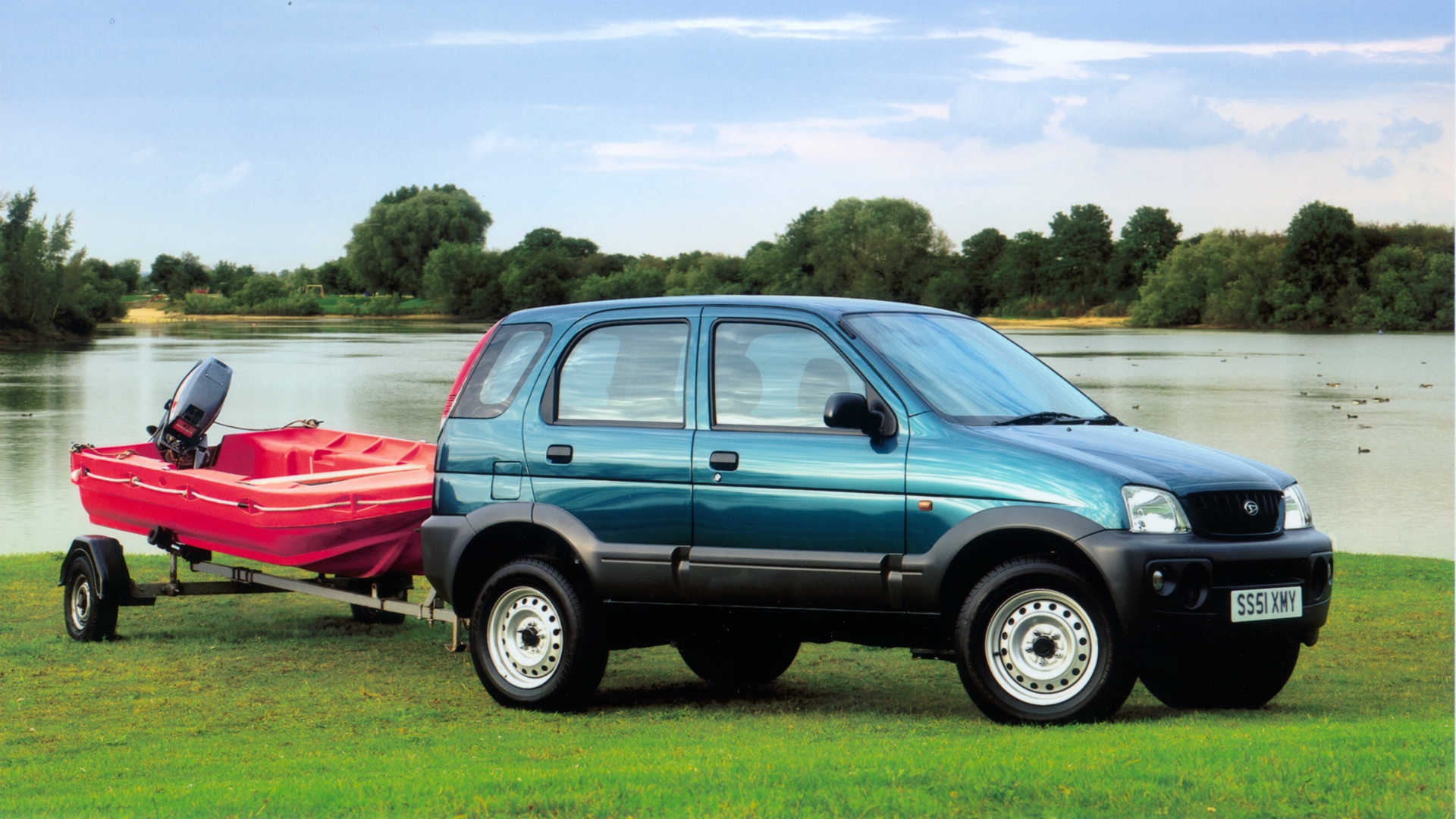
If you passed your driving test on or after 1 January 1997, you can:
- Drive a car or van up to 3,500kg maximum authorised mass (MAM) towing a trailer up to 750kg MAM
Tow a trailer over 750kg MAM as long as the combined MAM of the trailer and towing vehicle is no more than 3,500kg
Maximum authorised mass (MAM) – also known as the gross vehicle weight (GVW) – is the weight of a vehicle or trailer including the maximum load that can be carried safely on the road. It should be listed in the owner’s manual and on a plate or sticker attached to the vehicle.
If your driving licence was issued before 1 January 1997, you can drive a vehicle and trailer combination up to 8,250kg MAM. Click here to check your driving licence and which vehicles you can drive.
We also outline here in more detail how to check what you can legally tow.
Know your limits
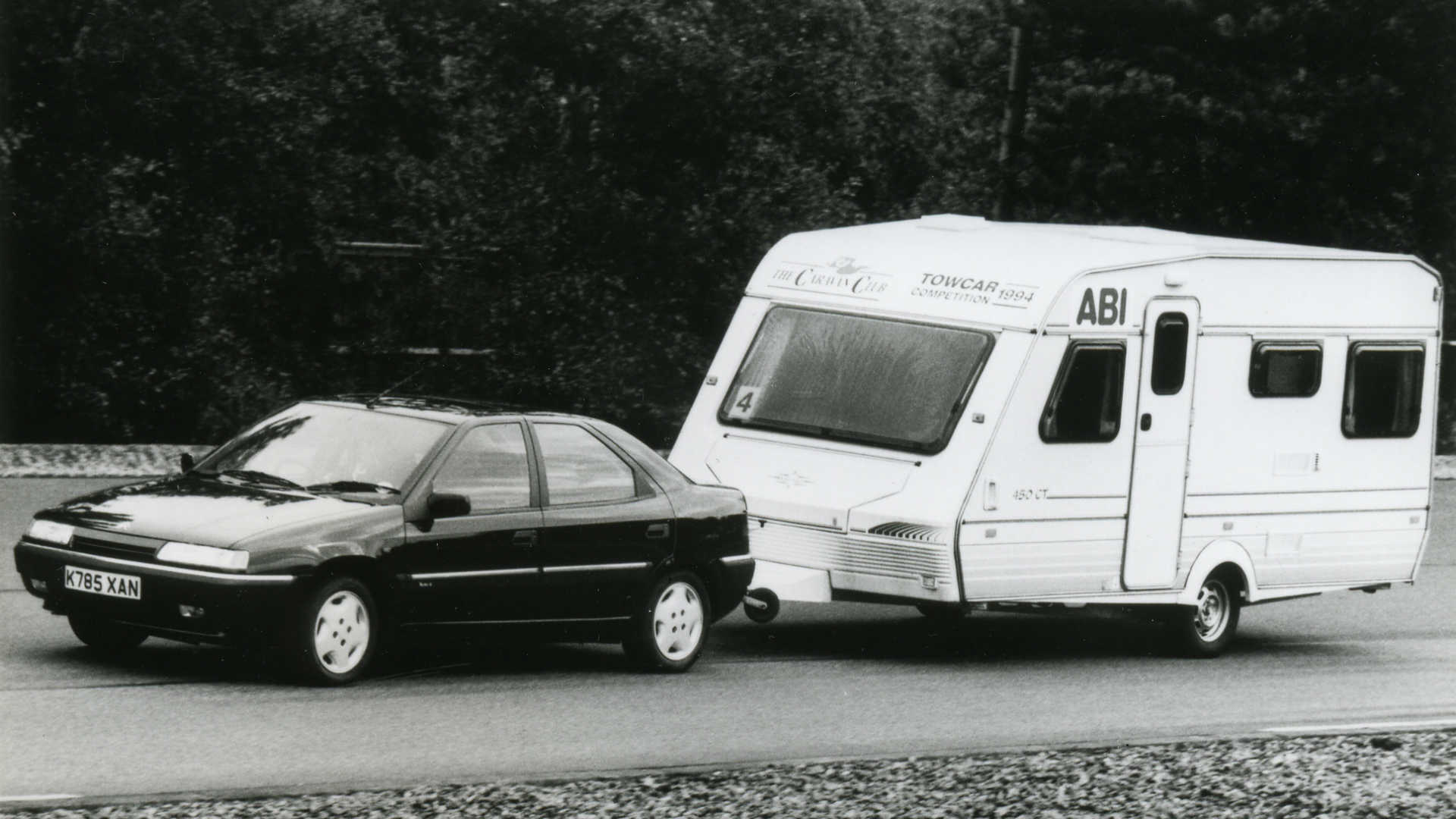
Most cars have a maximum weight they can tow, which is usually listed in the handbook or specification sheet. If in doubt, search online or contact your local dealer.
Many industry experts, including the Camping and Caravanning Club recommends that you only tow a caravan or trailer that weighs 85 percent or less of the car’s kerb weight. Experienced drivers may go up to 100 percent, but you should never exceed the towing limit of the vehicle that’s doing the towing.
Check the unladen weight of your trailer or caravan BEFORE it is loaded with passengers, goods or animals. Consult the manufacturer’s specification sheet or visit a public weighbridge if there are any doubts.
The maximum trailer width for any towing vehicle is 2.55 metres, while the maximum length for a trailer towing a vehicle up to 3,500kg is 7 metres.
For trailers with no braking system, the loaded trailer must not weigh more than 750kg or 50 percent of the car’s weight. For trailers with brakes, the car and loaded trailer must not weigh more than the maximum weight of the car and trailer combined.
Towbar: the laws
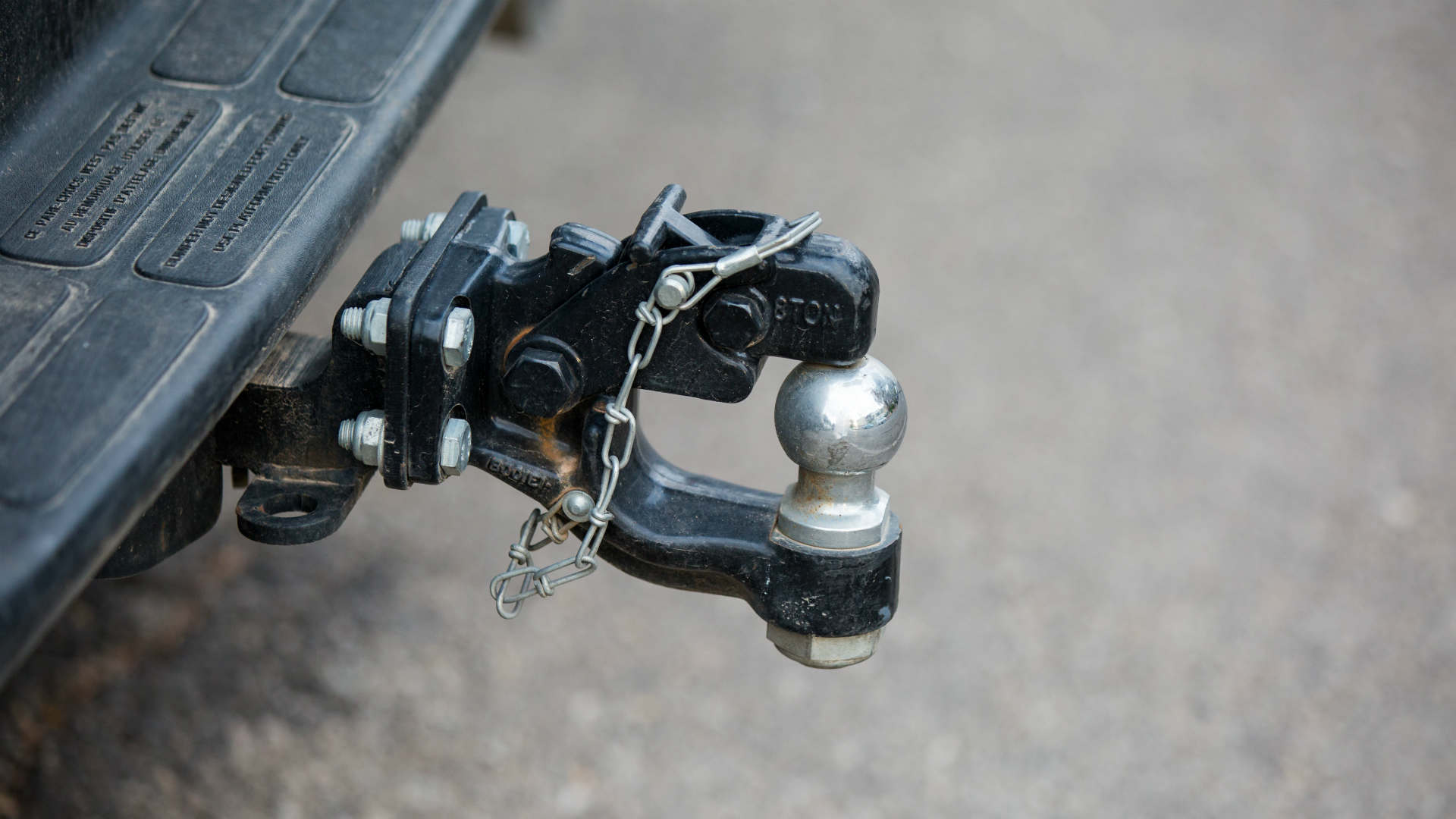
The towing equipment you use must meet certain safety standards and be used correctly. You could be fined up to £2,500, be banned from driving and get three penalty points for using a vehicle in a dangerous condition.
Towbars will be inspected during the MOT test for security, condition and inappropriate repairs or modifications. The tester will also check the electrical socket. But don’t wait until the annual MOT test to check your towbar – inspect it regularly, checking for serious rust or cracking.
If the towbar was first used after 1 August 1998, it needs to be ‘type approved’, which means it meets European regulations and is designed for your car.
Before you tow
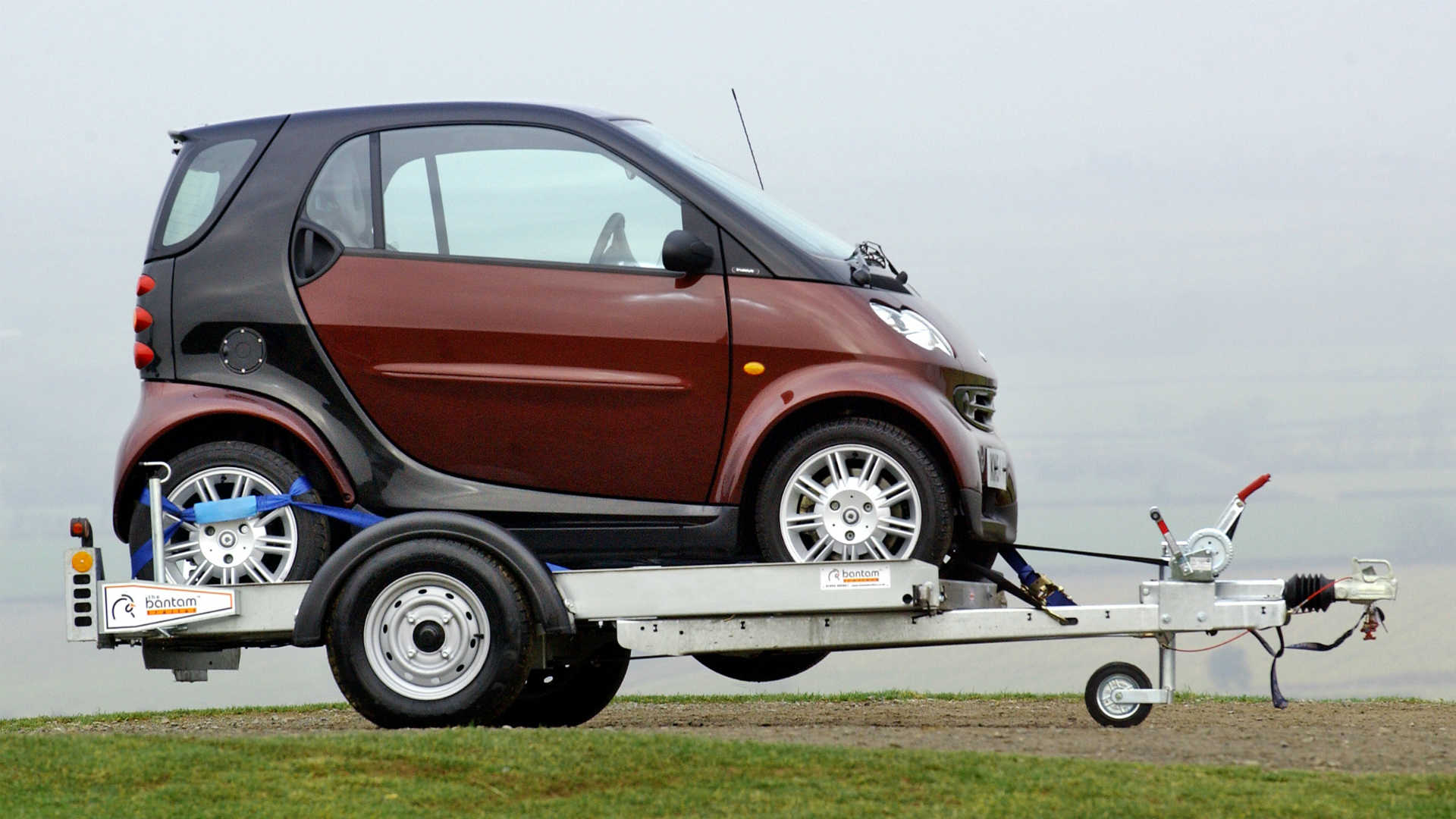
Before you tow, check that the trailer or caravan is correctly coupled to the towball or pin, and that the coupling height is correct. Also ensure that the electrical cable and socket aren’t damaged.
Caravans with brakes are legally required to have a breakaway cable fitted, which engages the trailer’s brakes and stops the trailer if it becomes detached from the towing vehicle.
Attach the cable to a dedicated mounting point on the towbar rather than around the towball, and make sure there is enough slack in the cable so that it doesn’t drag on the ground when driving and that the brakes are not applied when turning.
Attaching the trailer
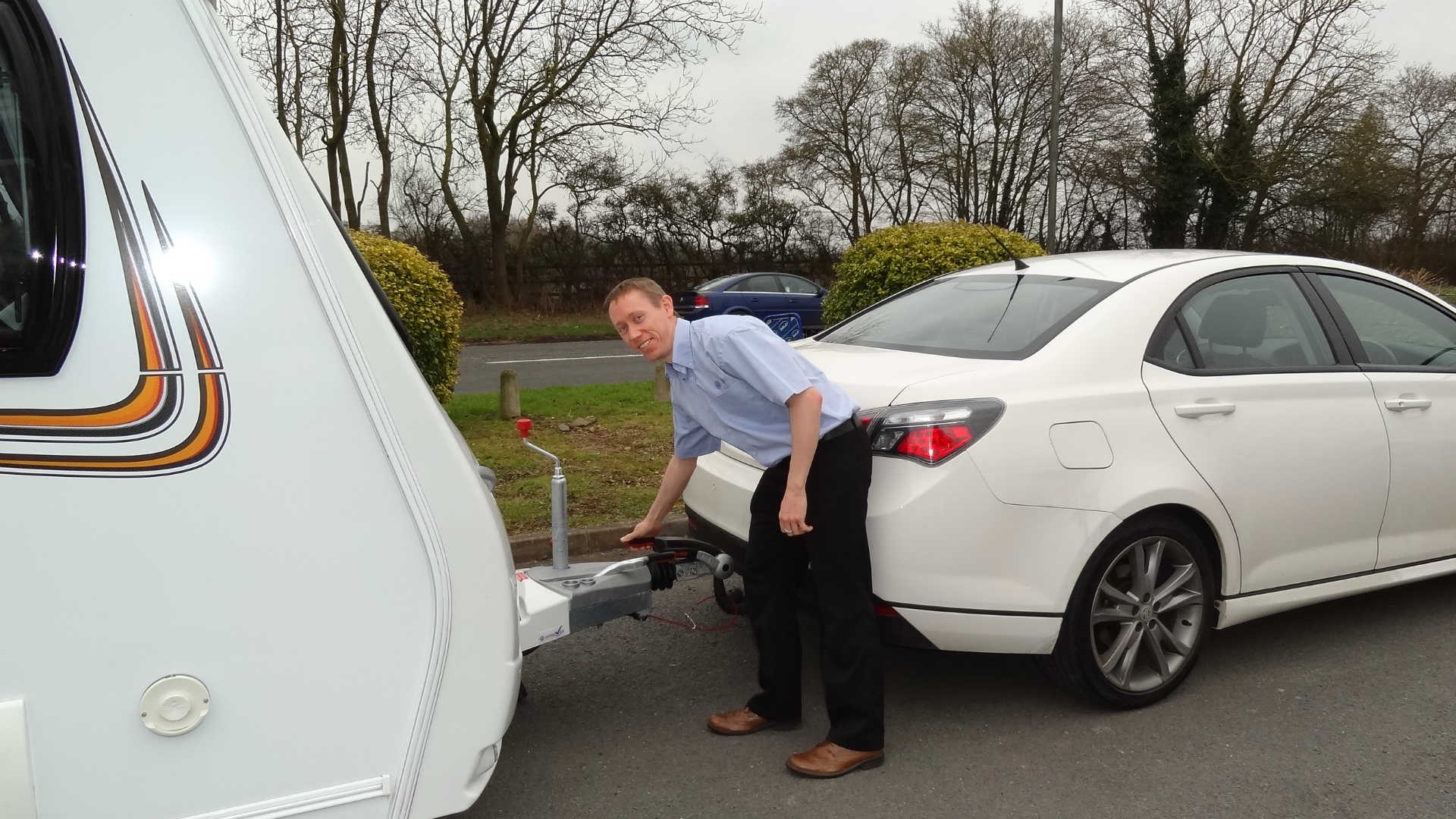
According to the NTTA, you should “become methodical about hitching up and unhitching”, so that it becomes second nature.
The not-for-profit organisation was founded in 1975 and sets the standards for the UK towing industry. Its 18-point guide to attaching a trailer includes the following key points. Click here for the full list of recommendations.
- Apply the trailer handbrake and remove any towball or electrical socket dust covers.
- Get a helper to stand with their hands showing you where the hitch is and reverse slowly back.
- Raise the front of the trailer using the jockey wheel assembly.
- Do not attempt to lift the front of the trailer – use the jockey wheel.
- When in position, wind the jockey wheel down to lower the coupling head onto the towball.
- Attach the breakaway cable(s) to the rear of the vehicle.
- Lift up and lock the jockey wheel assembly before completing the checks outlined in the next section.
Checks before each journey
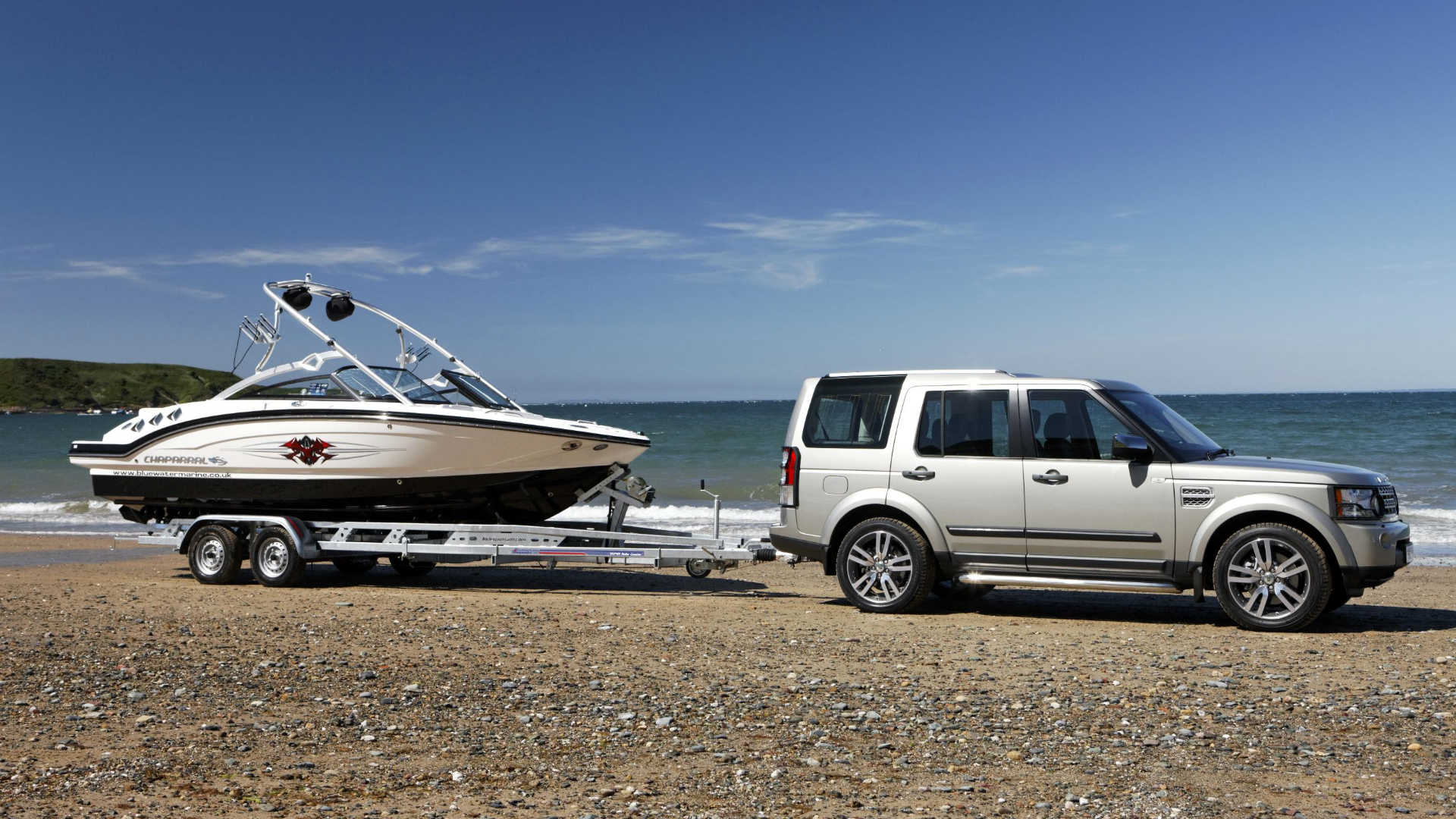
The NTTA recommends carrying out the following checks before each journey:
- Is the load correctly distributed? Place heavy items over the axle, medium items along the floor, and lighter items at the top.
- Is the load within the trailer’s official payload?
- Is the actual gross vehicle weight (GVW) being towed within the towing vehicle’s maximum towing limit?
- Is the load correctly secured? Ensure the load is tied down and, in the case of a caravan, safely locked away.
- Are all the lights undamaged and working correctly? Trailers must have two red sidelights, two red brake lights, an illuminated number plate, two triangular red reflectors, plus amber indicators designed to flash between 60 and 120 times per minute. Click here for a full list of trailer lighting requirements.
- Are the 7/13 core cable and plug undamaged?
- Is the correct number plate fitted?
- Is the breakaway cable or secondary coupling undamaged and correctly connected?
- Are the tyre pressures correct and are all tyres free from cuts, bulges and with adequate tread? The legal tread depth is 1.6mm, but we’d recommend changing your tyres when they reach 3.0mm.
- Are the wheel nuts/bolts tightened to the correct torque?
- Is the trailer correctly coupled to the towball or pin?
- Is the coupling height correct?
In addition to the safety checks, regular maintenance is essential to keep your trailer in good working order and to pinpoint any issues before you hit the road. Consult the trailer or caravan handbook for more information.
Tyres
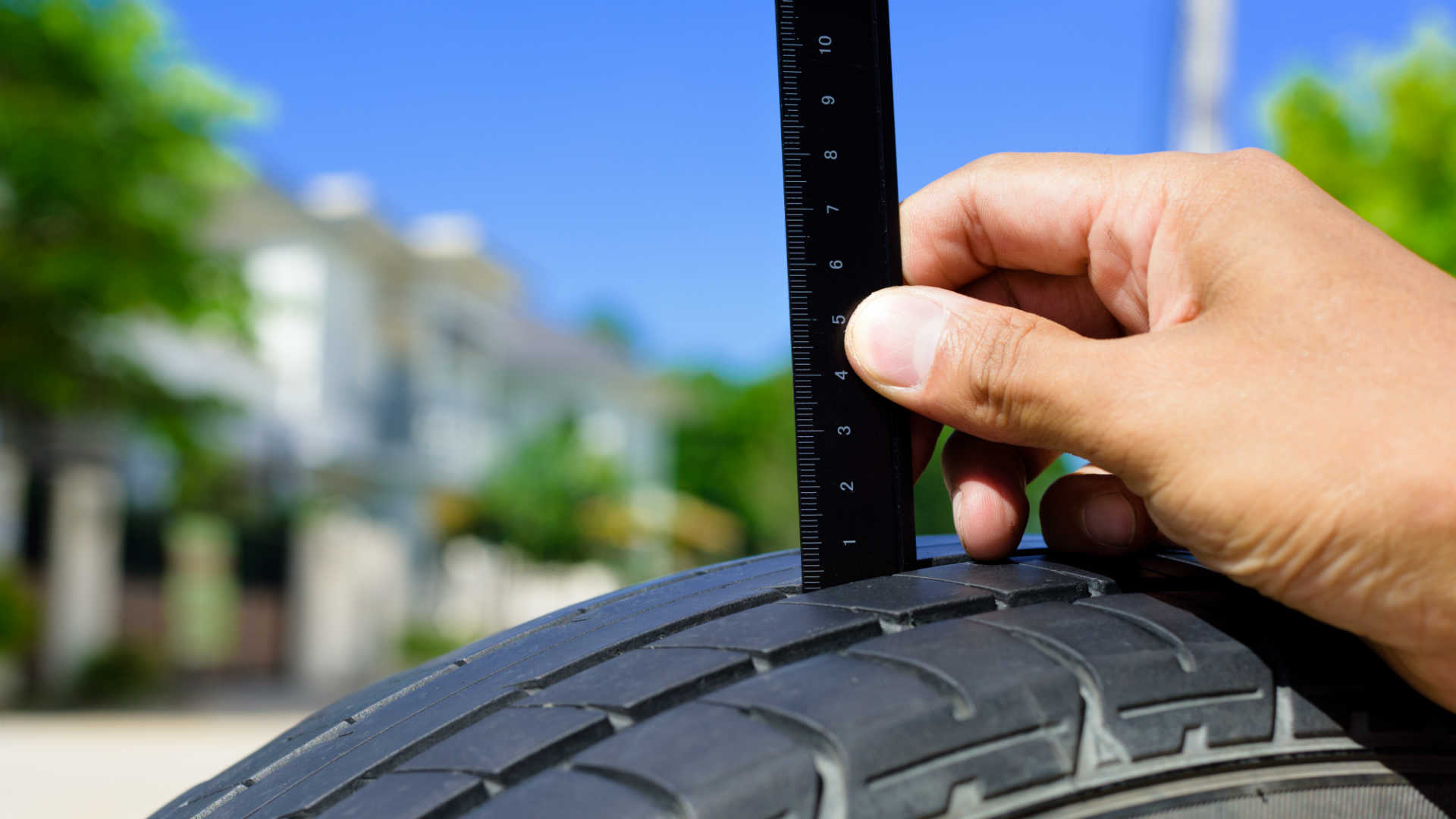
As well as checking the tread depth of the tyres, you should ensure that they are capable of carrying the maximum permitted weight of the trailer. Carry a spare wheel and a compact spare or tyre sealant kit.
Remember to check the tyre pressures of the towing vehicle, making adjustments in accordance with the figures outlined in the manual.
Towing mirrors
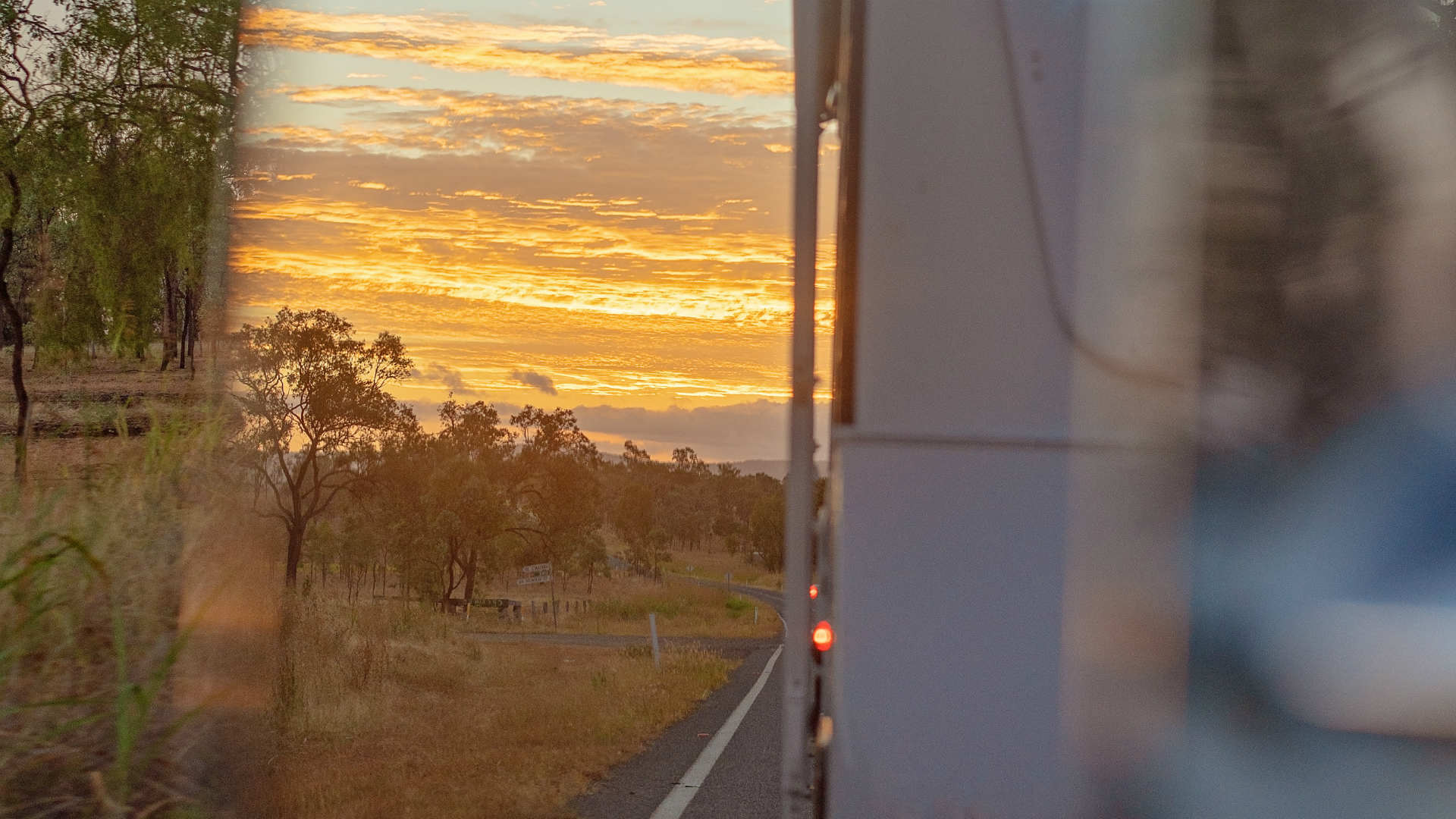
You must have an adequate view of the road behind you, and it’s a legal requirement to fit towing mirrors if your trailer or caravan is wider than the rear of your car.
The law states you must see an area that is four metres wide from the side of your caravan at a distance of 20 metres behind the driver. The mirrors should not project more than 200mm, or 250mm if they are E-marked to the latest standard.
The extended mirrors must be removed when not towing.
Driving with a trailer
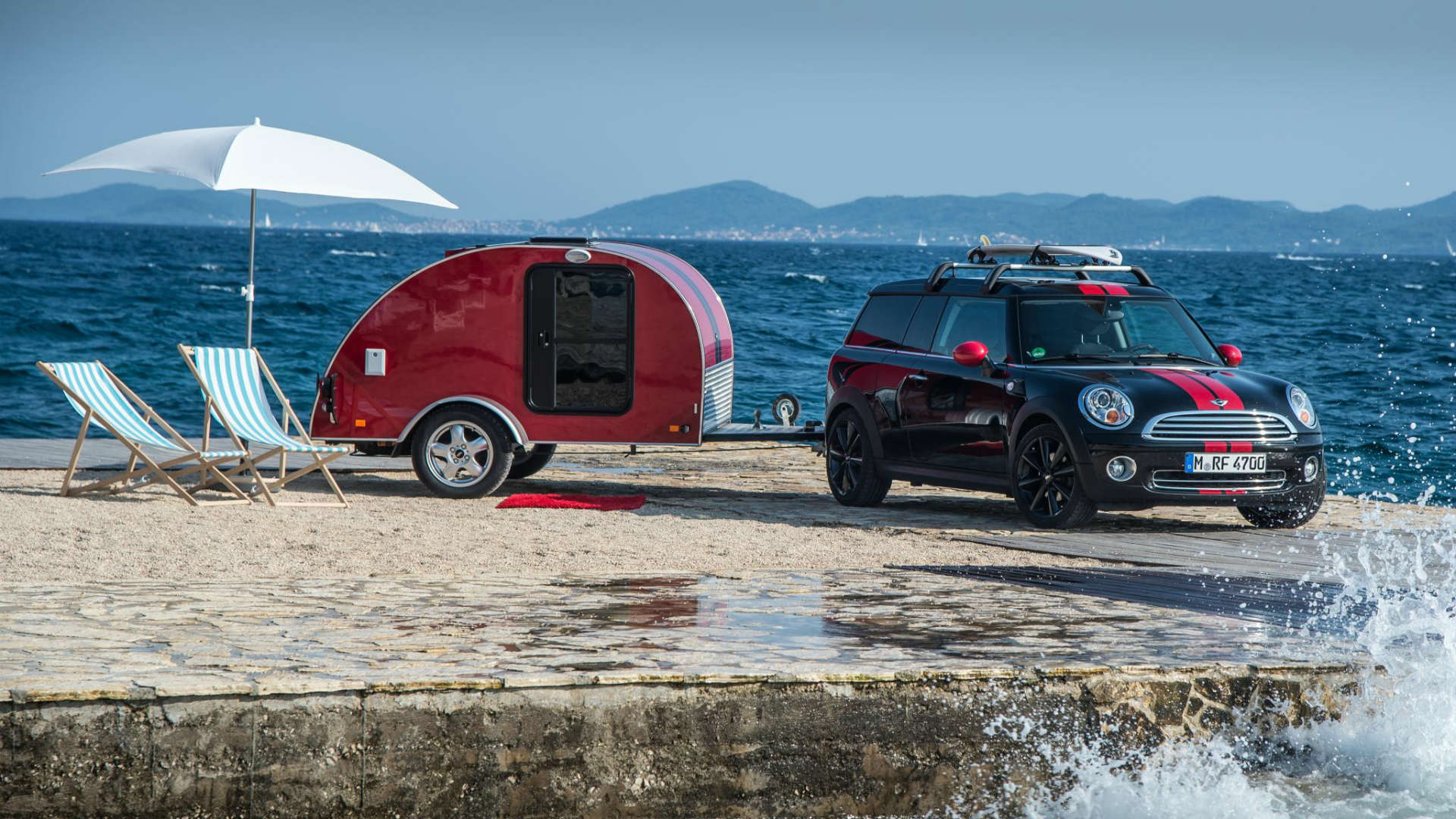
Once on the move, it’s important to remember that there are specific speed limits for cars towing a trailer or caravan.
A 30mph speed limit applies on all roads with street lighting (unless shown), with a 50mph limit on single carriageways, and a 60mph restriction on dual carriageways and motorways.
You must not drive in the right-hand lane of a motorway with three or more lanes if you are driving a vehicle towing a trailer.
As the Camping and Caravanning Club points out, ‘towing a caravan is no more difficult than driving solo’, but there are certain things to consider whenever you’re towing a trailer. These include:
- Acceleration: it will take longer to get up to speed, so allow yourself more time when overtaking or entering a motorway. Also consider your additional length before pulling away from a junction and into traffic.
Braking: it will take you an average of 20 percent more distance to stop.
Cornering: you will need to take a wider path on roundabouts and corners to enable the trailer to clear the kerb and other obstructions. Use your mirrors.
Hill starts: you will need to use more throttle when doing a hill start, along with careful clutch control.
Instability: snaking is a symptom of bad loading, inadequate noseweight*, excessive speed, incorrect tyre pressures or poor driving. Take special care when overtaking or being passed by lorries or coaches, as the air turbulence will unsettle your trailer or caravan.
*Noseweight is the downward force of the coupling head on the towball, which decreases as you accelerate. The Caravan and Motorhome Club recommends a noseweight of five to seven percent of the caravan or trailer’s actual laden weight.
Reversing with a trailer
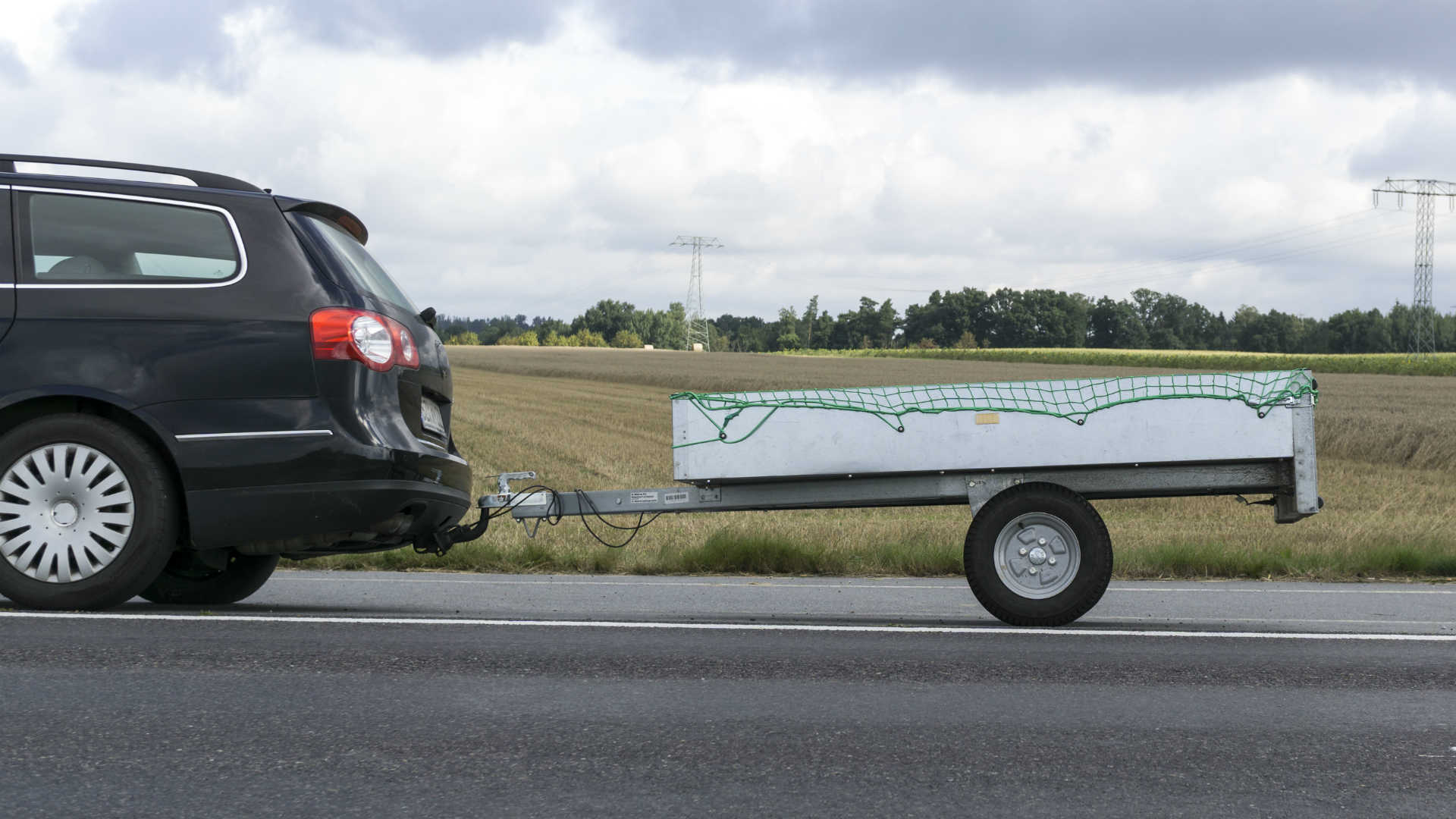
Reversing is arguably the most daunting prospect for those with little experience of towing, but it’s not as difficult as it first appears. With some practice, you could soon find that it’s as easy as riding a bike.
Size matters, so while it might be tricky to reverse with a small trailer – they turn quickly and you can’t see them in your mirrors – the manoeuvre is actually easier with a larger trailer or caravan.
Even the Camping and Caravanning Club admits that it can be “almost impossible” to reverse small trailers around corners, so it might be easier to unhitch and manhandle the trailer into position.
Regardless, it’s always preferable to ask a helper to guide you back, using predetermined hand signals. Check out this handy step-by-step visual guide to reversing with a trailer.
Final thoughts
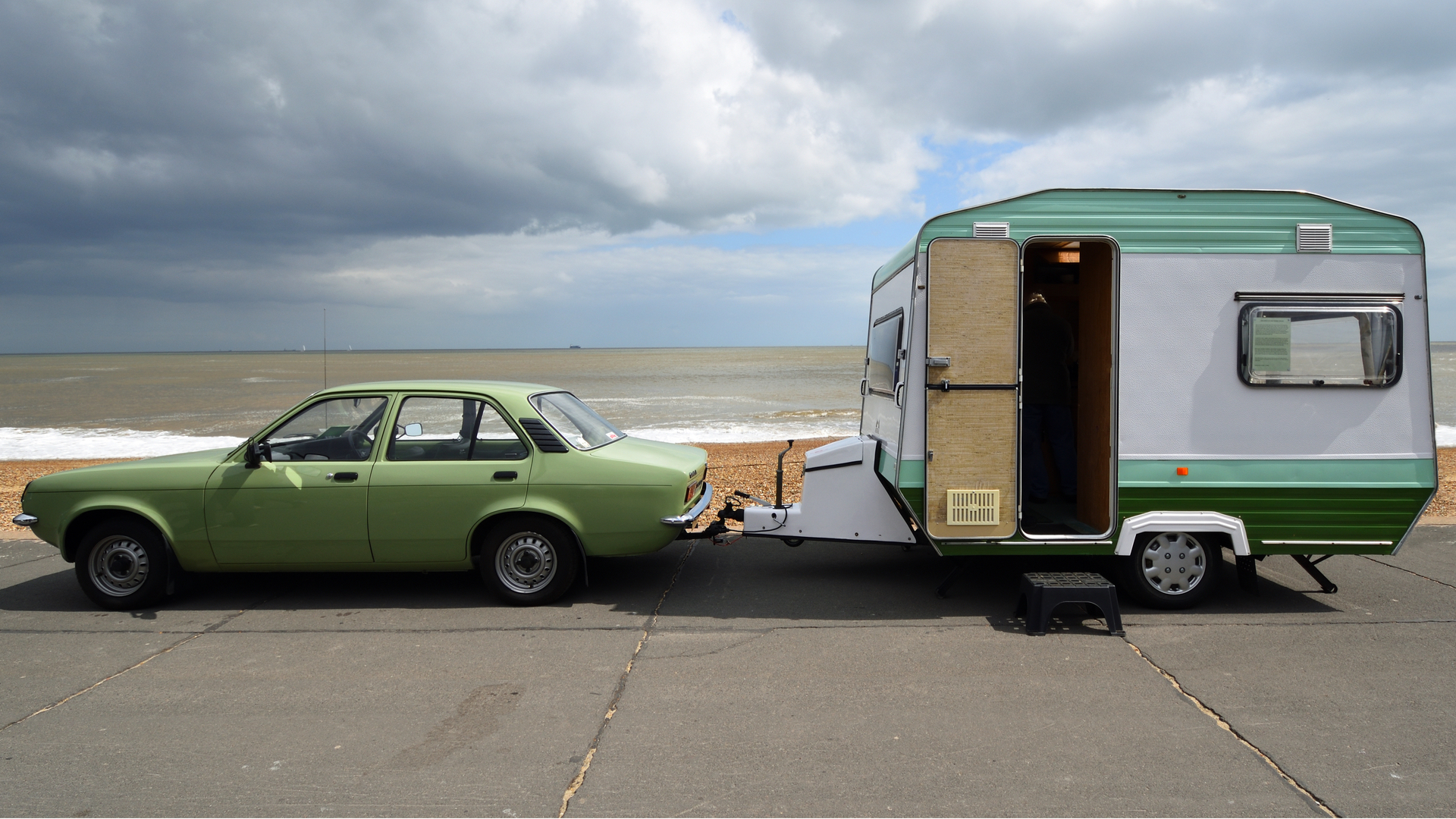
If in doubt, contact one of the camping, caravanning or towing organisations, or consult the literature that came with your caravan or trailer. Most handbooks can be downloaded via the internet in PDF form.
Also consider attending a caravan or trailer manoeuvring training course. The Caravan and Motorhome Club offers towing courses at 16 locations across the country, with prices starting from £150 per person.
Sources and resources
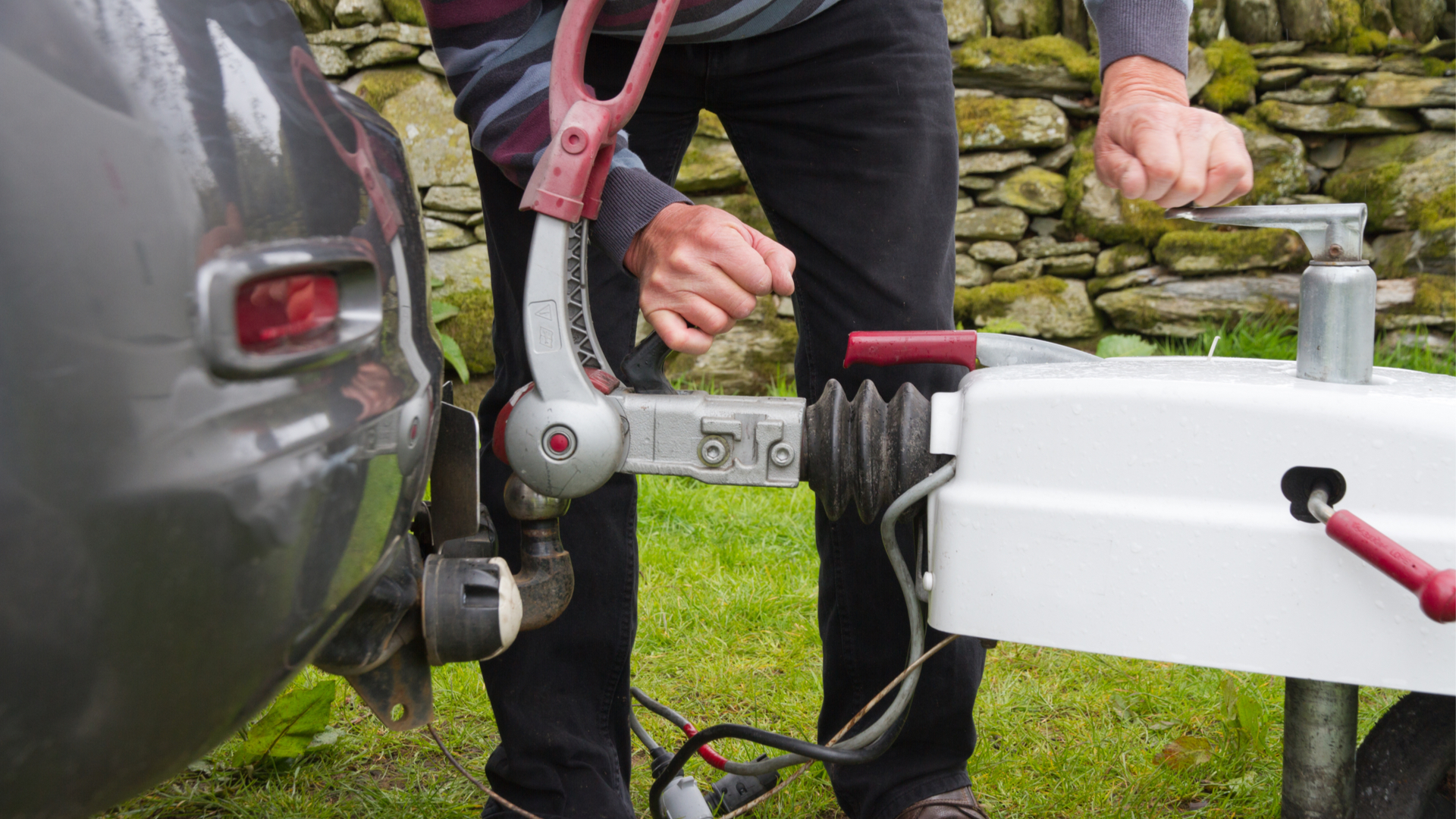
- Government guide to towing a trailer with a car
- National Trailer and Towing Association guide to safe and legal towing
- The Caravanning and Camping Club’s guide to safe towing
- Caravan and Motorhome Club
I’m glad you said that reversing with a trailer can become as easy as riding a bike if we keep practicing at it. My husband needs to get a trailer he can use to transport the equipment and tools he needs for the local service business he’ll be starting this summer. I’ll pass along your advice so I can have peace of mind that he’ll be safe while towing the trailer.
Thanks Rebecca, happy we could help!
I like how you mentioned that drivers should check their vehicle specification sheet for the maximum weight they can tow before towing anything. My brother is thinking of getting a hitchgrip tool to mount his trailer on because he’s considering getting an RV for his family to camp in when they go on trips or vacations. I think it’s a good idea for my brother to consider getting a reputable tool to prop up his hitch so that it doesn’t get damaged while towing his trailer.
It was helpful when you explained that it is important to maintain a speed of 30 miles per hour when towing a trailer. I want to purchase a riding lawnmower and a flatbed trailer so that I can go around and mow lawns around my neighborhood so that I can get some extra money. These tips you shared will help me to know how to tow the flatbed trailer safely.
This is a great article to print out and keep in ones glove box. Often people think towing is just a matter of “hooking something up.” A training course as well as substantial practice takes place before hitting the road on that family vacay. There is always the option of having something towed by a professional as well. Sometimes, it just may be worth it. Thanks so much for sharing this invaluable information.